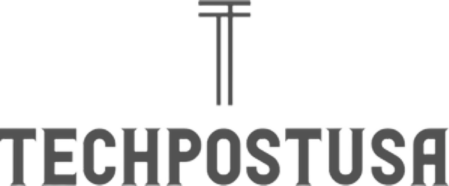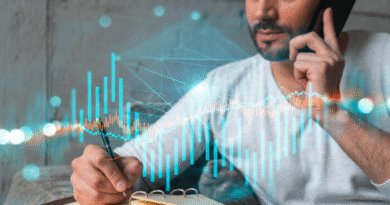Predictive Analytics for Everyday Wellness with Joe Kiani of Masimo
Imagine being able to anticipate tomorrow’s energy levels, stress risks, or sleep quality based on today’s habits. That is the promise of predictive analytics, a technology that takes data from daily life and translates it into foresight about health outcomes. Joe Kiani, Masimo and Willow Laboratories founder, has consistently framed healthy decision making as more powerful than last-minute interventions, and predictive analytics is one of the clearest tools for putting prevention into action. By forecasting risks before they occur, people gain the opportunity to make choices that protect their long-term well-being.
It matters because traditional healthcare is often reactive. Lab tests or medical visits may identify problems, but usually only after damage has already begun. Predictive analytics provides a way to break that cycle. Instead of waiting for symptoms, individuals can adjust sleep, nutrition, hydration, and activity proactively. Technology does not replace medical care, but it empowers people to manage their health with more clarity and confidence.
What Predictive Analytics Means for Wellness
At its core, predictive analytics uses data to anticipate future outcomes. In healthcare, it can mean identifying who is at risk for developing diabetes, forecasting stress levels, or predicting how sleep patterns will affect energy the next day. The principle is the same across all applications: past and present data create a window into the future.
For everyday wellness, it means people can see how consistent habits shape tomorrow’s performance and long-term health. The Centers for Disease Control and Prevention notes that data-driven forecasting supports preventive efforts by showing individuals the likely consequences of their lifestyle choices. Predictive analytics moves wellness from guesswork to informed decision-making.
The Science Behind Forecasting Health Risks
Predictive analytics rely on algorithms that analyze patterns from large datasets, including wearable sensors, nutrition logs, and lifestyle records. By finding correlations, these systems can estimate future risks and outcomes. For example, low sleep quality combined with high stress may forecast a drop in cognitive performance. A series of elevated heart rate patterns may indicate cardiovascular strain.
The National Institutes of Health highlights that predictive modeling can help identify early warning signs of chronic illness. Similarly, Stanford Medicine researchers have shown that predictive algorithms using wearable data can anticipate infections and other health shifts days before symptoms arise. This early insight allows for quicker preventive action.
From Population Data to Personal Guidance
Traditional health guidelines are built on average. While helpful, they often overlook individual variability. Predictive analytics bridges that gap by using personal data to create tailored forecasts. Instead of telling everyone to drink eight glasses of water, a predictive model might adjust hydration needs based on a person’s activity level, climate, and sleep patterns.
Harvard Health Publishing reports that personalized forecasts improve adherence because people are more likely to follow advice that feels directly relevant. This shift from population-level recommendations to personal guidance represents a major step toward prevention that works for real life.
Predictive Guidance
Predictive analytics is already being expressed in consumer tools. Nutu™ isa recently-launched, intuitive health app born from an idea that healthcare should reside in the homes, habits, and hands of individuals.The app reflects this principle by framing daily choices to encourage small, sustainable changes, an example of predictive thinking in action.
Joe Kiani, Masimo founder, remarks, “What’s unique about Nutu is that it’s meant to create small changes that will lead to sustainable, lifelong positive results.” This perspective underscores the value of forecasting, aligning prevention with early, everyday choices. By focusing on early, daily decisions, predictive analytics supports prevention in a way that is accessible and sustainable, ensuring that health improvements are made long before crises arise.
Predictive Analytics in Everyday Decisions
Forecasting is not only for complex diseases. It can shape simple daily choices that accumulate into better long-term health. For example, predictive models can estimate fatigue risk by analyzing recent sleep and activity. They can anticipate hydration needs by factoring in climate and exercise. Stress forecasts, drawn from heart rate variability and behavioral data, can help individuals prepare for demanding days with relaxation techniques.
Predictive analytics enhances adherence by helping people anticipate obstacles and prepare solutions in advance. It creates a sense of partnership between individuals and their health data, turning prevention into a practical, daily routine.
Challenges and Ethical Considerations
Despite its promise, predictive analytics raises challenges. Data privacy is a major concern, since forecasting requires access to sensitive health information. Protecting this data and ensuring it is used responsibly is essential.
Accuracy also matters. Predictions are probabilities, not certainties, and false alarms can create unnecessary worry. Tools must be carefully validated to ensure they guide rather than frighten users. The World Health Organization stresses that predictive technologies should be transparent, reliable, and integrated with human oversight to maintain trust.
Applications Across the Lifespan
Predictive analytics can provide value at every stage of life. For children, forecasts can identify sleep or hydration needs that support growth and learning. For adults, predictive tools can anticipate stress patterns, guide nutrition, and flag risks for chronic disease.
Older adults benefit from forecasting that anticipates falls, infections, or cognitive decline. Johns Hopkins researchers note that predictive analytics has the potential to reduce hospitalizations and maintain independence among older populations. Across the lifespan, forecasting extends preventive care beyond the clinic into daily routines.
Forecasting for Prevention
Predictive analytics transforms prevention from a general concept into a practical tool for everyday life. Using data to forecast risks gives people the opportunity to make preemptive choices that protect long-term health. Unlike reactive care, which intervenes after problems emerge, predictive tools encourage adjustments when they matter most. By turning trends into foresight, predictive analytics helps individuals feel more in control of their health journey, reinforcing prevention as a daily practice rather than an occasional checkup. As Joe Kiani, Masimo founder, puts it, “I want to help people and allow them to make better decisions.”
When paired with empathetic platforms, predictive analytics become more than numbers, but they become guidance that is encouraging, timely, and actionable. This approach ensures that prevention is not left to chance but supported by foresight. Looking ahead, predictive analytics empower individuals to turn daily data into lifelong resilience.




